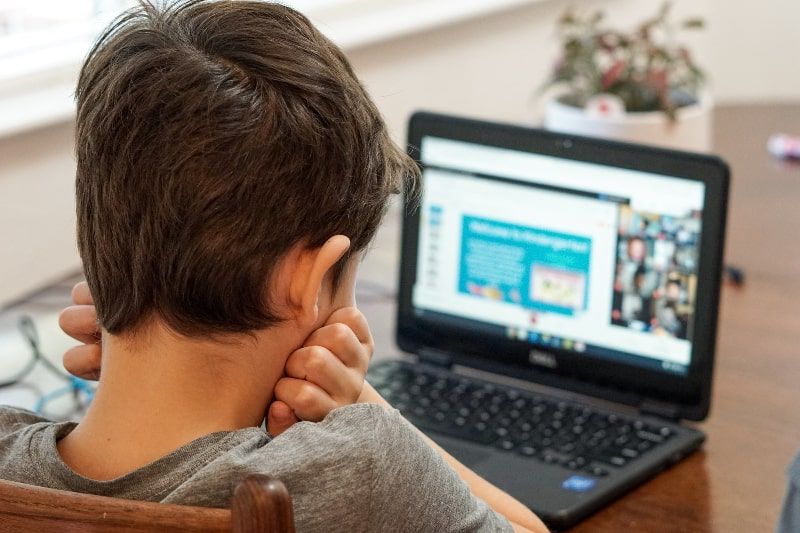Virtuality will permeate education more in the future
The digital divide in future education can be fought with literacy programs and government-private initiative alliances.

According to the Asociación de Internet MX, the number of Internet users in Mexico in 2021 reached 84.1 million. In the world, it is estimated that close to five billion people have internet access; however, access is unequal since while in North America it is 94.6 percent, in Africa it barely reaches 39.3 percent; in Latin America the average percentage is 68.9 percent.
This was pointed out by Leopoldo Vega Correa, director of Telecommunications of the General Directorate of Computing and Information and Communication Technologies (DGTIC) of the UNAM, who explains that in Mexico and the world there are significant inequalities that make it impossible for millions of people to exercise their fundamental rights. "It is clear to all of us that information technologies have permeated all phases of human life and are the basis for exercising rights such as freedom of expression or education".
Based on the 17th Study on the Habits of Internet Users in Mexico 2021 of the aforementioned Association, in the group of people over 55 years old, nearly half of them lack access to the information superhighway; which means that this sector is the largest group of people with a digital divide. Therefore, there is an urgent need to address it, taking into account cybersecurity.
Telecommunications play the role of enabler of other prerogatives and its importance is such that the Political Constitution of the United Mexican States states: "The State shall guarantee the right of access to information and communication technologies, as well as to broadcasting and telecommunications services, including broadband and internet". To this end, it shall establish conditions of effective competition in the provision of services.
The digital divide consists of the lack of internet and the inability to use it. As a result, inequalities are generated that unfortunately affect the least favored groups and the smallest populations; in large cities, we have access to the service, but in towns with few inhabitants there is a less economic interest in providing it.
The backwardness grows and with it, new inequalities are generated, such as technological inequality.
By 2030, the UN has different goals for digital inclusion or equal access to technologies, which will allow for a more communicated world, but also with fewer cracks. Some initiatives speak of this, of a series of technological convergence efforts, of the facility that all services must have.
In Mexico, 92 percent of users use a smartphone as a connection device; 45.2 percent use a computer; 24.4 percent use a smart TV; 14.4 percent use a tablet; and 4.4 percent use a video game console, among others.
Digital life
The new generations use communication tools to socialize; our income is supported by electronic data and we can have a medical appointments remotely. In recent years, the evolution of knowledge and use of the Internet has been remarkable.
The educational field is no stranger to this evolution. Due to the pandemic, above all, the need arose to continue with the training of the new generations: the simplest tool to achieve this was videoconferencing, and synchronous communication (that which allows interaction at the moment), but it is not the only one.
There are also distance learning platforms, such as learning environments, which facilitate learning not only synchronously, but also by depositing materials and having activities for the student to self-train and self-evaluate; these are other constructivist learning models, where students generate the experiences that allow them to acquire new knowledge.
New technologies are emerging all the time; some, such as virtual reality and metaverses (virtual worlds where we no longer exist as people, but as a representation of ourselves on the network) will surely permeate education in the future.
Innovation will continue and technologies will continue to evolve. Those that we now see as emerging, for example, 5G or Wi-fi 6, will surely play a major role in facilitating greater access to the Internet in terms of the number of connected devices, as well as reach and coverage.
The first is an initial effort and we must remember that, like others, it will take some time to mature; it is first integrated into the so-called high-end equipment. It will gradually become more popular until it reaches remote locations.
Government and IP alliances
Reducing the digital divide is difficult, acknowledges the university professor, but there are initiatives to reach underprivileged populations. Isolation, lack of communication, and barriers related to the lack of knowledge of these technologies could be attacked through digital literacy programs, with alliances between government and private initiatives to provide services to different populations, even if the economic benefits are not what is expected for commercial entities.
In other countries, for example, there is free access to at least basic internet services. Efforts must be coordinated by government action and policy. In conclusion, Leopoldo Vega stresses that we cannot avoid the use of technology, but as social beings, we must be close and live with other people not only through a screen. "Let's give ourselves time to see each other face to face".




